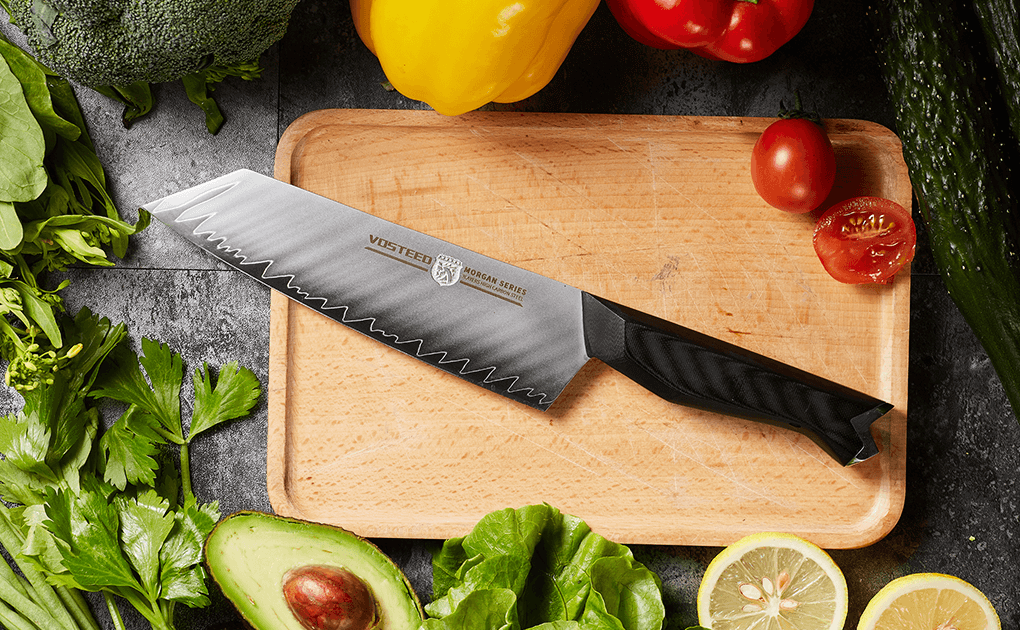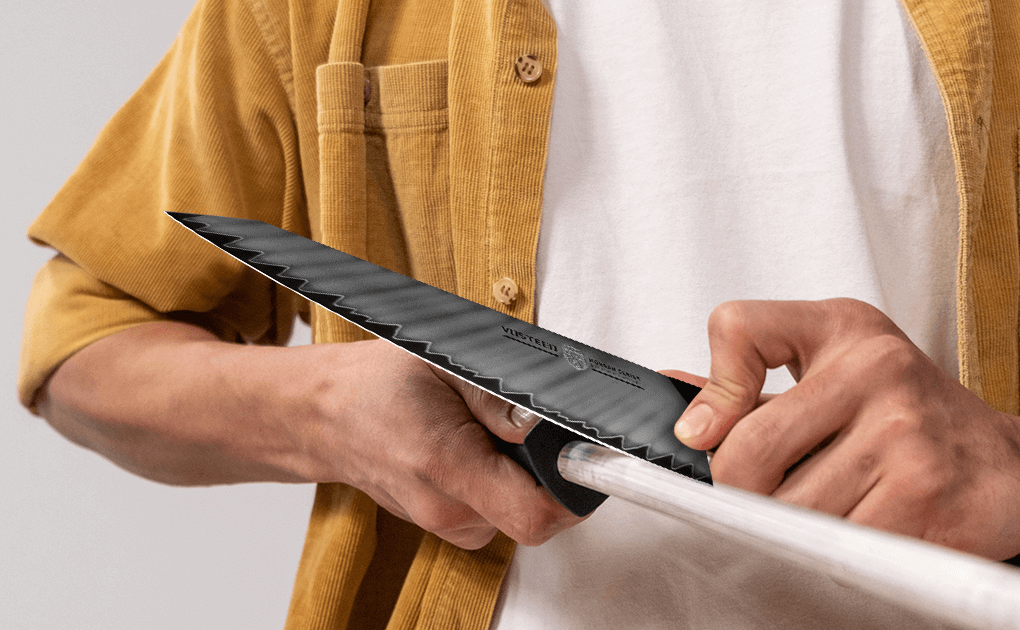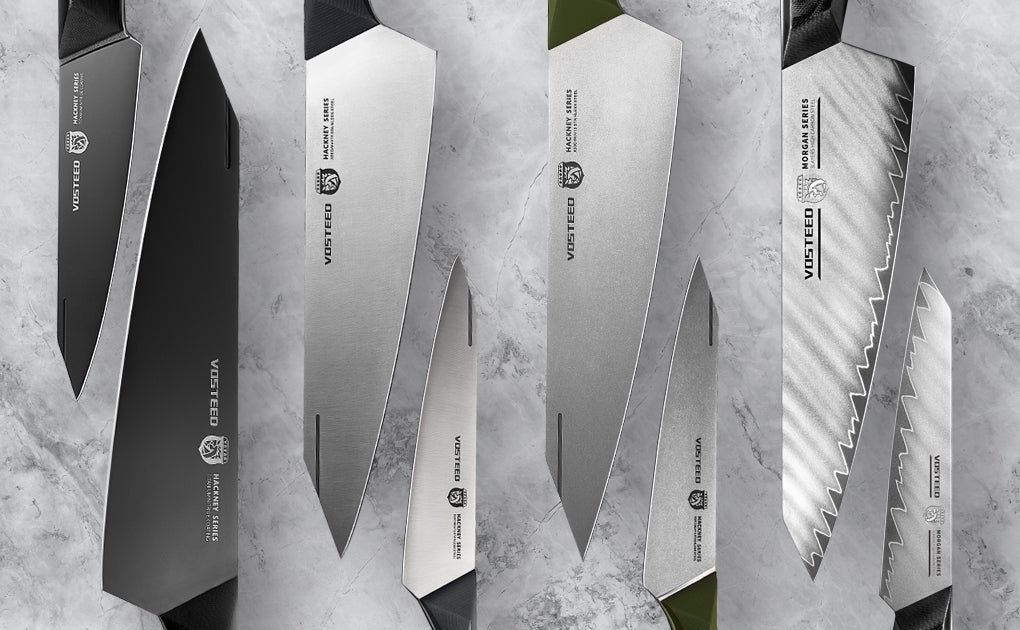In short, Santoku is a Japanese-styled chef knife. The blades on most Santoku knives are around 7 inches, and they are designed to be multi-taskers. A good Santoku is sharp right out of the box, well-balanced, easy to use, not too heavy, simple to maintain, and has good durability.
What Is a Santoku Knife?
Santoku Knife gets its name from the Japanese Kanji “三德庖丁”. These words mean “three virtues chef knife”. Contradictory to popular myths and marketing hypes, Santoku is not an ancient or traditional Japanese-styled chef knife. Some food anthropologists suggest that the phrase “three virtues 三德” refers to three food preparation actions: cutting, slicing, and chopping; while other culinary historians suggest that “three virtues 三德” reflect Japanese interpretations of the early 20th-century kitchen “cleaver, modern, westernized”.
To a certain degree, the story of the Santoku knife has reflected the food and nutritional transition of Japanese society. While Japanese people have used traditional kitchen knives such as Nakiri, Usuba, and Chinese cleaver; however, those knives are either cost too much or are too heavy for many new home cooks, and Santoku knives have perfectly solved these two problems.
Why Do You Need a Santoku?
Unlike specialized kitchen knives such as carving knives or serrated bread knives, Santoku is designed to be a primary kitchen knife and a multitask workhorse. It’s great for daily food prep tasks such as cutting, slicing, and chopping.
While most professional chefs have mastered the arts of using different types of kitchen knives, it can be a daunting task for new cooks to learn how to use different specialized kitchen knives. Once new cooks have mastered the necessary knife techniques from using Santoku knives, they will be more confident in exploring more kitchen knife styles. In addition, buying a complete set of kitchen knives can be expensive for some casual cooks; thus, the Santoku knife provides a good budget option for them. In short, Santoku will not only help the new cook save money but also help them to develop their food prep routines as well as be familiar with cutting, chopping, slicing, and dicing motions.
How to Choose a Santoku for Your Kitchen?
First, a good Santoku has a unique visual appearance. In general, Santoku knives have slightly taller blades than their western counterparts, and Santoku knives usually use sheepsfoot shaped blades.
Second, a good Santoku knife should have a sharp edge right out of the box. While many knife collectors and experts love to regrind or sharpen the edges of their knives; average households and new cooks don’t always have the right sharpening equipment or experiences. Thus, sharp Santoku knives will let the users start their food preps as soon as they got the knives.
Third, a well-made santoku knife should be easy to use and comfortable to hold. This point reflects the original concept of Santoku, a compact, quality, everyday kitchen knife. A good Santoku knife also has good ergonomics, is well-balanced and not too heavy, and it should have a comfortable pinch grip position for a long period of use.
Forth, a good Santoku should not be too expensive. As many culinary historians suggested, Santoku is a working-class family knife. Because of this, a good Santoku also has good durability and is made to last.
Why the Morgan Santoku is the perfect knife for you?
- Sharp right out of the box.Our Morgan Santoku uses 3-layer of forged steel with HRC 60±2 and is sharpened with the traditional Japanese method
- User-friendly and easy to control.Morgan Santoku is well-balanced, lightweight. It provides you with a firm grip and good ergonomics. Purposefully designed grip and pinch position for secured and comfortable thumb and pinkie control. Less fatigue, more enjoyment.
- Affordable price.If you are the new cook with a limited budget. Morgan Santoku will be the perfect choice for you.
- Simple to maintain. Morgan Santoku is low maintenance and a working-class family knife.
- Excellent durability: It is FULL-TANG construction from one SOLID steel slab. Less worry, more cutting.





Leave a comment
All comments are moderated before being published.
This site is protected by hCaptcha and the hCaptcha Privacy Policy and Terms of Service apply.